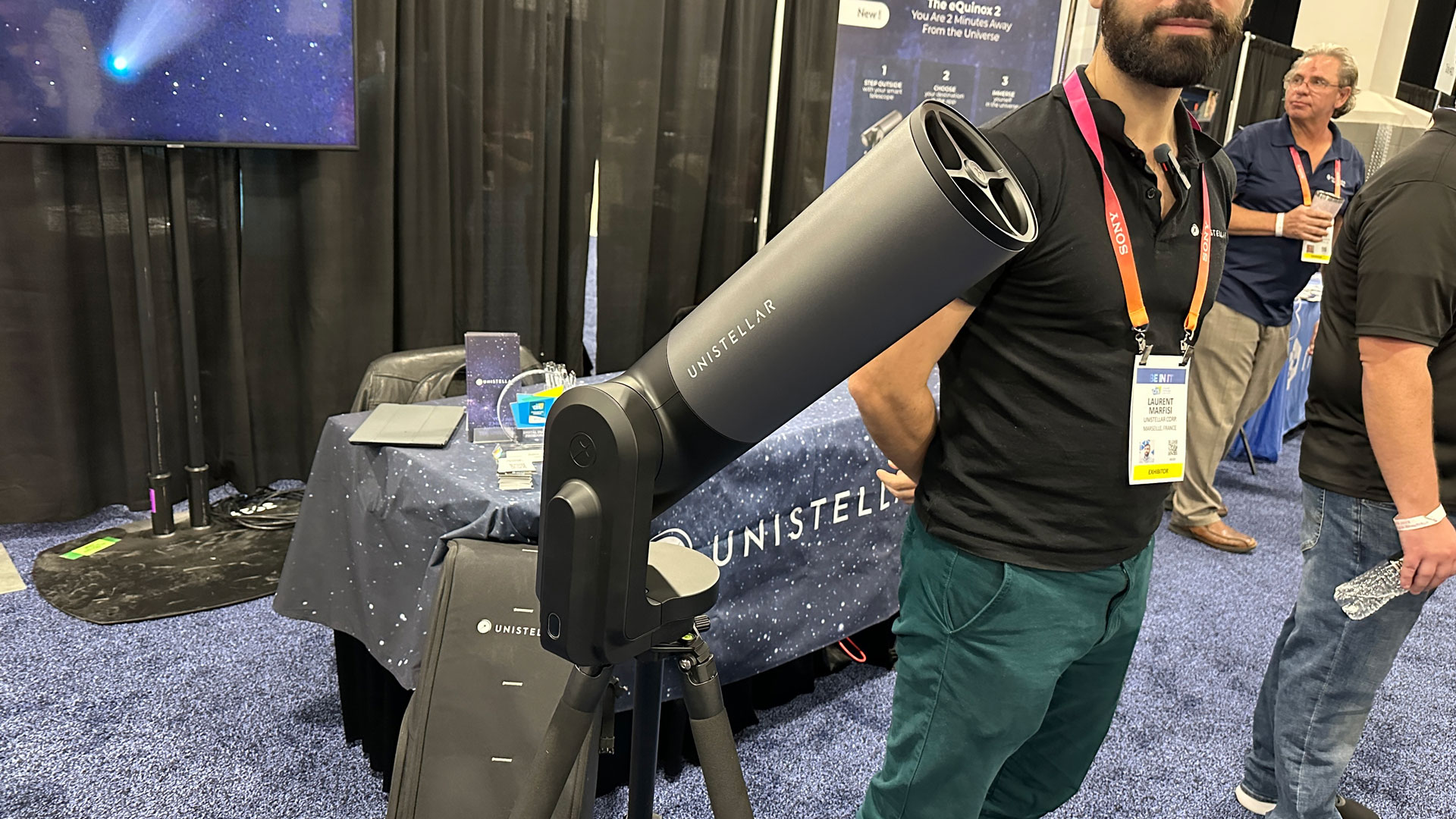This smart telescope knows how to find stars and beat light pollution
Unistellar's new eQuinox 2 is a smart telescope that finds the stars for you

If you look up at the night sky, you might see some stars, even a bright planet and, of course, the moon. You won't see galaxies and the billions of stars that are sharing the universe with those brighter objects. That's because studies show 80% of the world's population lives under light-polluted skies. At CES 2023, Unistellar is showing off a smart telescope that appears to beat back the light and reveal the wonders of the universe to anyone.
The new eQuinox 2 is a 400x telescope - upgraded from the original model with a better photo sensor and a wider field of view - that features no discernible knobs or user controls. The gray, sleek optical device caught my eye on the first press night of CES. At roughly two feet in length, it's obviously a stargazer, but the lack of physical controls might confuse you. It shouldn't.
Unistellar showed me how you can use the associated app (on a phone or tablet) to control the motorized telescope. On a tablet, you can select the Orion Nebula and the smart telescope uses your phone's GPS to know where it is on Earth and where to point the optics. I watched as they tapped an on-screen stellar object and the eQuinox 2 rotated to face the Nebula.
Because we were inside a convention hall, Unistellar couldn't live demo its secret sauce, but they walked me through a simulation.
I know this Unistellar Smart telescope The eQuinox 2 with 400x (optical) is $2500, but I kinda want it. It uses a smartphone or iPad app to take all the guess work out of astronomy and makes the invisible visible. #CES2023 pic.twitter.com/OMnZcUZrRMJanuary 6, 2023
On an iPad screen, they selected the Whirlpool Galaxy, and the telescope silently rotated to the proper position. After a few moments, I saw an on-screen image, but no galaxy. This is where things get interesting. Because of light pollution, standard telescopes can, unless you trek to the most remote areas, struggle to see many astronomical objects.
eQuinox 2 uses Smart Light Pollution Reduction, an AI and algorithmically based system that digitally corrects the images to remove the effects of light pollution. The Unistellar rep tapped a button and then I watched the on-screen image resolve until we could see the beautiful, tiny swirly galaxy millions of miles away from us.
"It wasn't that it wasn't there, it was that we needed to clean it with an algorithm to make it accessible," Unistellar's rep told me. He added that it was hidden because of the light pollution, but also because it's a faint object. What's not entirely clear is how much of what eQuinox 2 shows you with the Smart Light Pollution Reduction is optical and what is a digital concoction of the algorithm based on what it knows the galaxy looks like.
Sign up for breaking news, reviews, opinion, top tech deals, and more.
The app comes pre-loaded with 500 celestial objects and suggestions for finding more, but you will not be hand-adjusting the telescope to find them. eQuinox 2 is 100% app controlled. That probably makes it a good fit for amateurs, but maybe not semi-pro astronomers.
eQuinox 2 is now on pre-order for $2,499 (€2,499 in Europe) and ships in early 2023.
Check out our CES 2023 hub for all the latest news from the show as it happens. We'll be covering everything from 8K TVs and foldable displays to new phones, laptops, and smart home gadgets, so stick with us for the big stories.

A 38-year industry veteran and award-winning journalist, Lance has covered technology since PCs were the size of suitcases and “on line” meant “waiting.” He’s a former Lifewire Editor-in-Chief, Mashable Editor-in-Chief, and, before that, Editor in Chief of PCMag.com and Senior Vice President of Content for Ziff Davis, Inc. He also wrote a popular, weekly tech column for Medium called The Upgrade.
Lance Ulanoff makes frequent appearances on national, international, and local news programs including Live with Kelly and Mark, the Today Show, Good Morning America, CNBC, CNN, and the BBC.